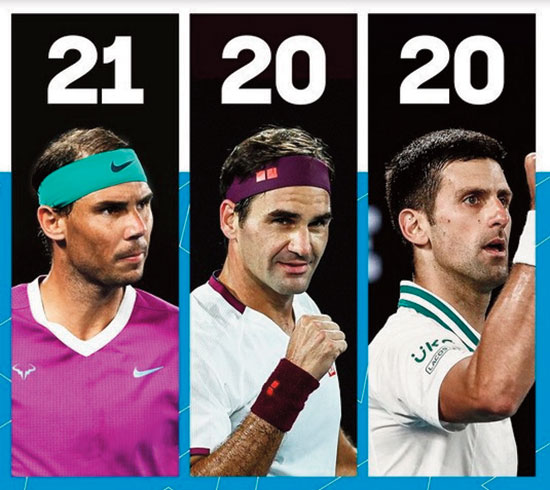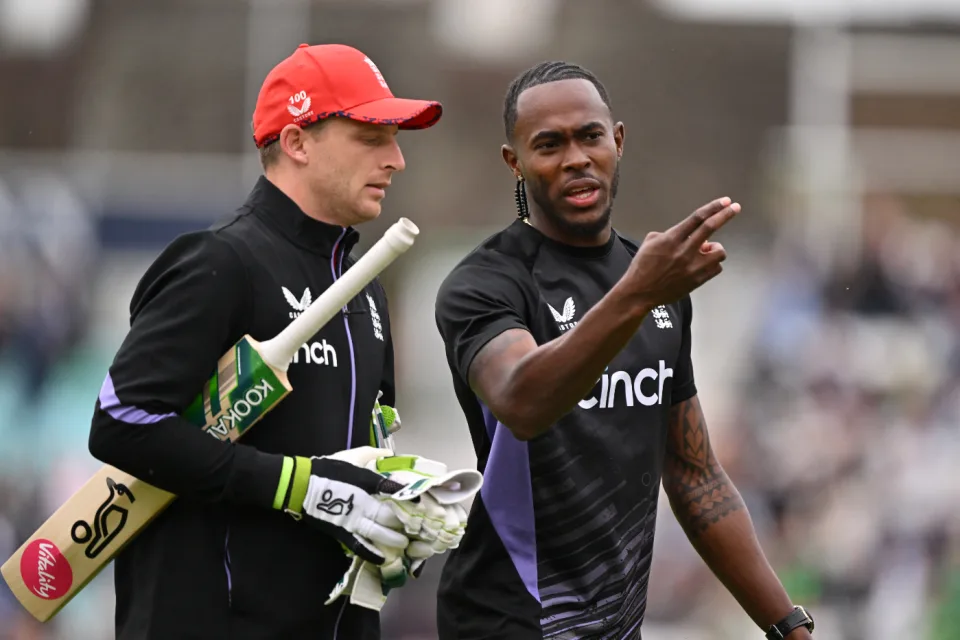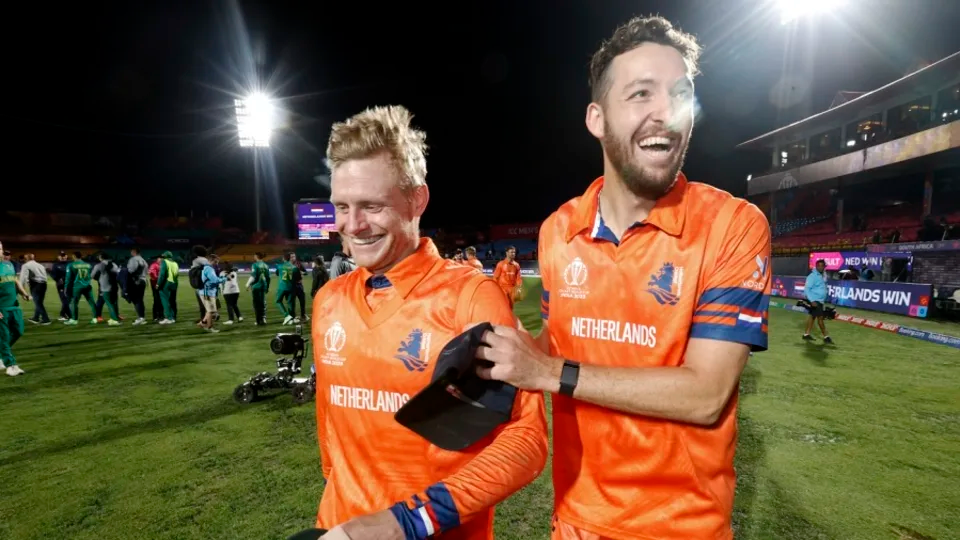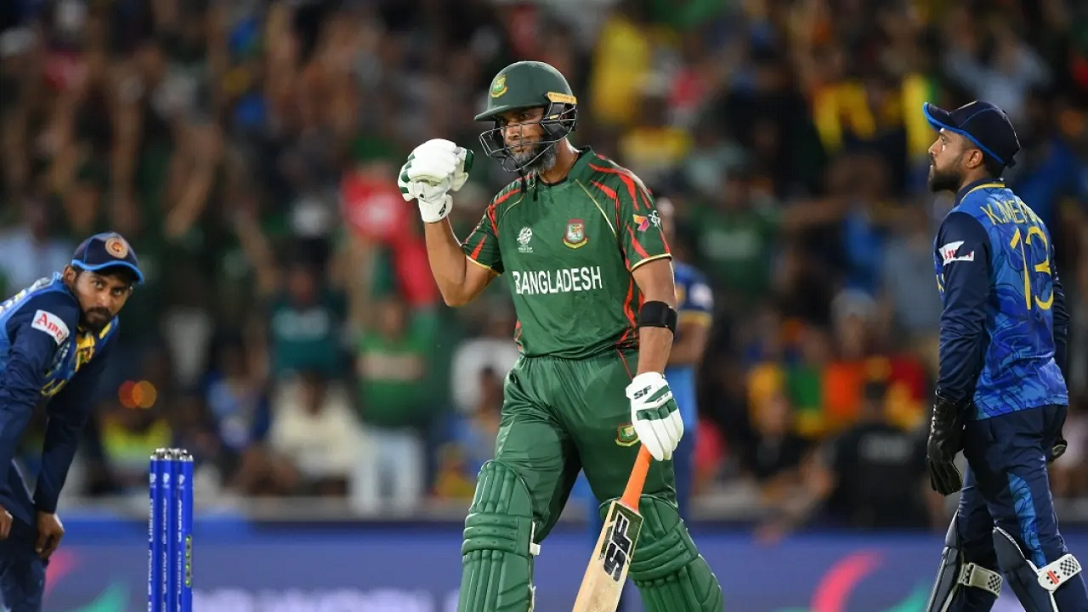Sports
Nadal wins 21st Grand Slam title

Rafael Nadal took all-time ownership of the record for men’s Grand Slam singles titles as the Spaniard earned his record 21st major crown with an extraordinary 2-6, 6-7(5), 6-4, 6-4, 7-5 come-from-behind victory over Daniil Medvedev at the Australian Open men’s singles final at Rod Laver Arena on Sunday.
Nadal looked down and out after dropping the opening two sets, but steeled himself to snap a three-way tie with Novak Djokovic and Roger Federer on 20 major singles titles, winning the match in five hours and 24 minutes.
Thirteen years since he denied Federer on Rod Laver Arena, the 35-year-old became just the fourth man in the open era to capture every major twice following a remarkable 2-6 6-7(5) 6-4 6-4 7-5 victory.
It was his first comeback from two sets down in a major final and first at any stage of a Grand Slam since the fourth round at Wimbledon in 2007.
“I know it’s a tough moment, Daniil. You’re an amazing champion. I’ve been in this position a couple of times trying to have the trophy with me,” Nadal said. “It has been one of the most emotional nights in my tennis career, and to share the court with you is just an honour.
“For me it’s just amazing. A month-and-a-half ago I didn’t know if I’d be back and today I’m back here with you holding this trophy.”
Nadal admitted serious conversations had been held within his team about whether he could ever compete at the highest level again following a chronic footy injury.
An unprecedented 21st major, his first since Roland-Garros in 2020, gave the Spaniard the outright lead over his great rivals Federer and Djokovic for the first time.
“What you did today I was amazed. During the match I tried to play tennis but after the match I asked him ‘Are you tired?’,” Medvedev said. “You raised your level after two sets for the 21st Grand Slam… you’re an amazing champion. Congrats. It was unbelievable.
“I’m going to try to be better next time.”
Three years ago, Medvedev played up to the role as the Flushing Meadows villain, but won over a new legion of fans when he surged back from a two-set deficit only to fall narrowly short to Nadal.
Medvedev was under no illusion he would have it easy winning over a crowd intent on seeing one of the greats stand triumphant for the first time since 2009 on the final Sunday at Melbourne Park.
He cared not for sentiment though and a 136km/h backhand winner down the line was a warning sign he was taking the early initiative.
Sweat-soaked in the heat of battle on a humid summer’s night, the Spaniard was desperate to stem the flow when he rushed the net only to push a forehand volley wide.
It handed the Russian a 5-2 lead and he landed the set in 42 minutes.
Where Nadal’s heavy, higher-kicking blows typically proved so effective at wearing down challengers, Medvedev represented the modern prototype, a 1.98m tormentor with seamless movement and exceptional baseline consistency.
He was a formidable prospect, particularly on hard courts, and the sixth seed was under the pump.
Despite landing little more than half his first deliveries and spending more than twice as long on serve, Nadal was hanging tough.
His first break point arrived via a punishing 40-shot rally, ended on a backhand drop-shot winner, and he brought the crowd to its feet two points later when he opened up a 3-1 lead.
A set point slid by in a 12-minute battle on serve and, having survived Felix Auger-Aliassime from match point down in in a four-hour-plus quarterfinal, Medvedev was emboldened.
Thirty minutes later, he held a two-set advantage.
It was a sizeable summit for Nadal from here.
Not since a round of 16 clash against Mikhail Youzhny at the All England Club 15 years ago had he recovered from two sets down in a major.
With the pair locked at 4-all in the fourth, a first sniff of a chance arose.
A bold attempt off a poor drop shot backfired badly on Medvedev when it caught the net cord.
It proved pivotal as Nadal capitalised and after three hours and 12 minutes, Rod Laver Arena erupted when the 35-year-old landed the third set.
Medvedev’s woes were only mounting.
As the match passed the four-hour mark, Nadal appeared physically fresher of the two and 14 minutes later, the contest was all square.
A forehand winner to break at two-all in the decider came as a telling blow to his opponent’s fading hopes.
Twice before Nadal had led a break in the deciding set of an Australian Open final only to lose with victory in sight – to Djokovic in 2012 and to Federer in 2017.
It was an ominous sign when he failed to serve out the match at the first time of asking.
But Medvedev was unable to carry the fleeting momentum any further.
After five hours and 28 minutes Nadal had completed one of his greatest triumphs against extraordinary odds.
That number, 21, had never seemed further but had a sounded pretty sweet as it rang around Rod Laver Arena.
“All the support I have received since I arrived here, you are just amazing,” Nadal said. “Without a doubt, probably one of the most emotional ones in my tennis career.
“Having the huge support I received in those three weeks will stay in my heart the rest of my life.”
Sports
England face Australia in the battle of champions

The first truly heavyweight clash of this expanded T20 World Cup format comes freighted with both history and subplots. A rematch of the 2010 World T20 final at Kensington Oval, the match pits Jos Buttler’s defending champions – who are aiming to become the first team to retain the trophy – against the Australian winning machine, victors at the 2021 edition and current world title-holders in Test and ODI cricket. And that’s before you throw in the Ashes for afters.
Already there is added pressure on England, after the rain in Bridgetown led to a share of the points in their opener against Scotland (and that having conceded 90 runs from 10 overs without taking a wicket in a tepid bowling display). Lose to their oldest rivals and it will leave their Super 8 prospects open to being waylaid by the perils of net run-rate calculations, or worse.
The Scotland match was the third abandonment in five suffered by England, after a rain-affected home series against Pakistan, which has clearly hampered their readiness for this campaign after almost six months without playing T20 together. It does not take much for a side to click in this format – and England looked in decent shape when they did get on the field against Pakistan – but Buttler will be anxious for things to go their way on Saturday, if only to avoid further questions referencing the team’s disastrous ODI World Cup defence last year.
Australia, under the laidback leadership of Mitchell Marsh would love nothing more than to add to the English sense of jeopardy – having helped bundle them out of the tournament in India on the way to taking the crown. Their head to head record is less impressive in T20 however, with England having won six of the last seven completed encounters, as well as that 2010 final.
Despite a wobble with the bat, Australia avoided mishap against Oman earlier in the week, the experience of David Warner and Marcus Stoinis shining through in difficult batting conditions. Surfaces in the Caribbean – not to mention those games staged in the USA – have already had teams scratching their heads; rather than the “slug-fest” England had prepared for, following a high-scoring tour of the Caribbean in December, it looks as if boxing smart may be the way to go.
Speaking of Warner, this could be the last time he faces up against England in national colours – and another match-winning contribution would likely reduce the chances of them meeting again in the knockouts. On the other side of the card is Jofra Archer, fresh from an emotional maiden outing at Kensington Oval and ready to take on Australia for the first time in any format since 2020. Can Mark Wood fire up England’s campaign, as he did during last summer’s Ashes? Will Pat Cummins be back to harass the old enemy once again? Seconds out, it’s almost time to rumble.
Cummins is set to return after being rested for the Oman game, which saw Mitchell Starc leave the field with cramp. Starc is understood to be fine and could keep his place – which would likely see Nathan Ellis miss out. Marsh is still not fit to bowl, with Australia likely to continue with the allrounder combination of Stoinis and Maxwell to give them cover.
Australia (probable XI): David Warner, Travis Head, Mitchell Marsh (capt), Glenn Maxwell, Marcus Stoinis, Josh Inglis (wk), Tim David, Pat Cummins, Nathan Ellis/Mitchell Starc, Adam Zampa, Josh Hazlewood
The one change England may consider is Reece Topley coming in for Wood, with the expectation that there will be some rotation among the seamers through the course of the tournament.
England (probable XI): Phil Salt, Jos Buttler (capt & wk), Will Jacks, Jonny Bairstow, Harry Brook, Liam Livingstone, Moeen Ali, Chris Jordan, Jofra Archer, Adil Rashid, Reece Topley/Mark Wood
[Cricinfo]
Sports
South Africa up against their bogey team in batter-unfriendly New York

Once is coincidence, twice is a clue, and three times is proof.
To paraphrase Agatha Christie, that is the narrative around South Africa’s meeting with Netherlands at this T20 World Cup.
The Dutch beat South Africa at the 2022 tournament and ended their semi-final hopes in a match where South Africa appeared to be sleep walking, and then beat them again at the 2023 ODI World Cup, where they exposed South Africa’s vulnerability in the chase. If they to do the treble, not only will Netherlands take the lead in Group D, but they will offer conclusive evidence of the threat they pose to Full Members, especially South Africa.
Of course, it will take some doing after South Africa’s opening performance against Sri Lanka, where they reduced their opposition to their lowest T20I total and chased it down in fairly straightforward fashion thanks to the most stable middle-order of their white-ball era. In Aiden Markram, Tristan Stubbs, Heinrich Klaasen and David Miller, South Africa have bankers and big-hitters and, for this match, they also have the advantage of experience. They’ve already played at Eisenhower Park, and have first-hand knowledge that run-scoring doesn’t come easily;Klassen said they are prepared to use their “cricket brains” and play “smarter cricket”.
But the conditions could be good news for Netherlands, who are not naturally a line-up of big hitters and build their innings on a foundation of turning ones into twos. In other words, they tend to take a slightly more conservative approach to batting, which may work well here, but they’ll be wary of the uneven bounce of the surface and will have to come up with plans to counterattack especially against South Africa’s seamers. Their own bowlers were exemplary in Dallas and will look to build on that performance against a line-up that will likely be more proactive than Nepal’s, but who they have managed to keep quiet not once, but twice in the past. Third time’s the charm, they say.
Anrich Nortje’s stunning return to form against Sri Lanka means South Africa may not have to tinker with the bowling combination, and Gerald Coetzee and Tabraiz Shamsi may have to wait their turns to get a game. The batting line-up should be unchanged, with no space for Ryan Rickelton yet.
South Africa: Quinton de Kock (wk), Reeza Hendricks, Aiden Markam, Tristan Stubbs, Heinrich Klaasen (wk), David Miller, Marco Jansen, Keshav Maharaj, Kagiso Rabada, Ottneil Baartman, Anrich Nortje
Conditions in New York may tempt Netherlands to include an extra seamer and they have Kyle Klein in their squad. But it could come at the expense of a shortened batting line-up and they may not want to risk that.
Netherlands: Michael Levitt, Max O’Dowd, Vikramjit Singh, Sybrand Engelbrecht, Scott Edwards (capt, wk), Bas de Leede, Teja Nidamanuru, Logan van Beek, Tim Pringle, Paul van Meekeren, Vivian Kingma
[Cricinfo]
Latest News
Mustafizur, Rishad, Hridoy dazzle in Bangladesh’s tight two-wicket win over Sri Lanka

Nuwan Thushara’s last over brought Sri Lanka screaming back into the match,as he first bowled Rishad Hossain, and then nailed Taskin Ahmed in front of the stumps with a pinpoint swinging yorker. This left Bangladesh eight wickets down, with 12 runs still to get.
However, the experienced Mahmudullah was at the crease for Bangladesh, and despite some further nervy moments, pushed Bangladesh across the line off the last ball of the 19th over.
But this was a match chiefly decided by Bangladesh’s own outstanding bowling. Mustafizur Rahman was the best among them, using shorter lengths and his cutters efficiently, to claim figures of 3 for 17. Rishad Hossain’s three-for through the middle overs also kept Sri Lanka quiet.
Mustafizur was instrumental in Sri Lanka’s downward spiral through the middle overs, which culminated in a crash-and-burn end. Ultimately, their inability to find boundaries, or even rotate strike against good Bangladesh bowling resulted in their downfall. A score of 125 for 9 always seemed poor on a decent pitch, even if their bowlers made a match of it in the end.
Brief scores:
Bangladesh 125 for 8 in 19 overs (Towhid Hridoy 40, Litton Das 36; Dhanajaya de Silva 1-11, Nuwan Thushara 4-18, Wanidu Hasaranga 2-32, Matheesha Pathirana 1-27) beat Sri Lanka124 for 9 in 20 overs (Pathum Nissanka 47, Dhananjaya de Silva 21; Tanzim Hasan Sakib 1-24, Taskin Ahmed 2-25, Mustafizur Rahman 3-17, Rishad Hossain 3-22) by two wickets
[Cricinfo]












